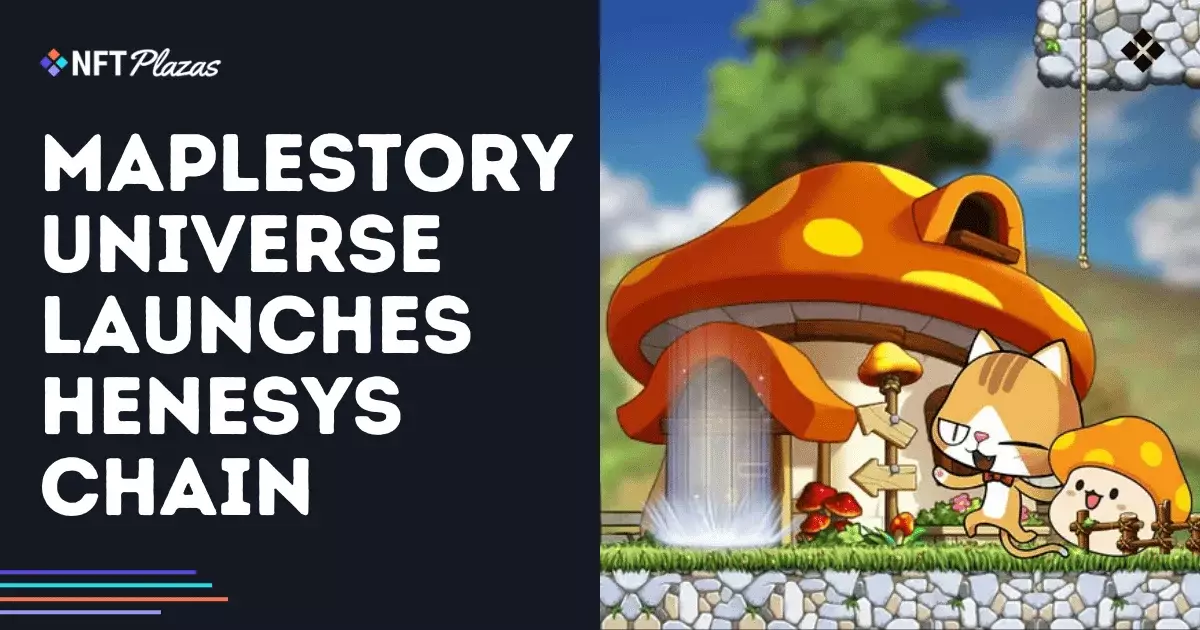The announcement of the Henesys Chain, a dedicated Layer 1 blockchain network for MapleStory Universe, signals an exciting paradigm shift in web3 gaming. By harnessing the capabilities of Avalanche technology and incorporating user-friendly structures, Henesys Chain places the player experience at its core. With millions of loyal MapleStory fans, this step is not merely an upgrade; it represents a redefining of how we interact with games, gamification, and community-driven economies.
Central to this ambition is the promise of gasless transactions. The prospect of playing a game without grappling with gas fees—often a significant barrier to entry in blockchain-based gaming—is a pretty radical shift. The technology behind meta-transactions promises to simplify blockchain interactions, thereby empowering more gamers to immerse themselves in the digital economy. This utility also expands accessibility, a hallmark of MapleStory’s legacy and an essential aspect for its future, as it invites everyone from casual gamers to crypto enthusiasts into a common public space.
Controlled Scarcity in the Digital Realm
Another noteworthy feature is the introduction of a permissioned NFT system to preserve item value. With the right intention behind gated item minting, Henesys Chain aims to establish an economy where scarcity is managed, allowing items to hold significant value in the marketplace. The use of Chainlink’s Verifiable Random Function (VRF) to ensure fair randomization only enhances this proposition. This dual approach promises not only to elevate the emotional bond players form with their in-game items but also places economic stability at the forefront.
Yet while this move is commendable, one must question the impact on creativity and innovation. By limiting certain minting rights, will developers be motivated to explore uncharted territories in design, or will this rigidity stifle game evolution? Striking a balance between accessibility and originality is crucial for the ecosystem’s health. While the customizability of items through controlled protocols could be seen as beneficial, it remains to be seen how flexible the development processes will remain.
Fueling a Participatory Economy
The introduction of the $NXPC token acts as the lifeblood of the Henesys Chain, driving economic interactions within this universe. By tying it to item creation, trading, and enhancements, MapleStory Universe ingeniously integrates user-generated content with real economic incentive. This circular economy can support thriving communities with shared priorities, embodying the essence of what decentralized platforms aspire to achieve.
However, there’s an inherent risk in over-reliance on a single token. As with many digital currencies, fluctuations in value can drastically impact players’ willingness to engage, create, and invest time in the ecosystem. Developers need to ensure that the $NXPC token’s introduction doesn’t become a double-edged sword—while generating economic activity, it should also avoid morphing into a speculative asset that risks alienating consistent players who seek stability over volatility.
Tools for Developers: A New Frontier
In promising to equip developers with essential tools that can forge Synergy Apps, such as companion games and social platforms, Henesys Chain seeks to tap into an ever-evolving genre of interactive experiences. This could very well render MapleStory Universe a multi-dimensional experience instead of a singular game. By empowering developers, it paves the way for creativity, adding rich layers of engagement that goes beyond traditional gaming items.
Nevertheless, true empowerment requires robust support structures and community engagement. Will MapleStory Universe prioritize developer-centric initiatives that encourage innovation? Sustained communication and involvement from the developers will be pivotal in ensuring this ecosystem thrives, particularly in an industry characterized by rapid change and fierce competition.
A Roadmap Beyond Gaming
As MapleStory Universe sets forth ambitious plans to integrate blockchain transparency and expand functionality, such as public blockchain explorers and NFT-based name reservations, it is evident that they envision an ecosystem far greater than a mere game. They indicate a clear intent to solidify MapleStory Universe as a comprehensive entity that thrives on community trust, sustained engagement, and shared ownership.
However, lofty ideals necessitate concrete execution. The challenge rests with the developers: can they navigate community feedback and needs while evolving their platform? The transition from a fan-favorite MMO to a fully-fledged decentralized ecosystem may present challenges, but with the right measures, it could also reveal unparalleled opportunities in an era where what players demand from games is rapidly evolving.
Ultimately, as Henesys Chain heralds the next era in gaming, the vision to marry excitement with decentralization holds tremendous potential, though traversing this uncharted territory will require vigilance and a commitment to uphold the foundational values that MapleStory players have cherished over the years.















